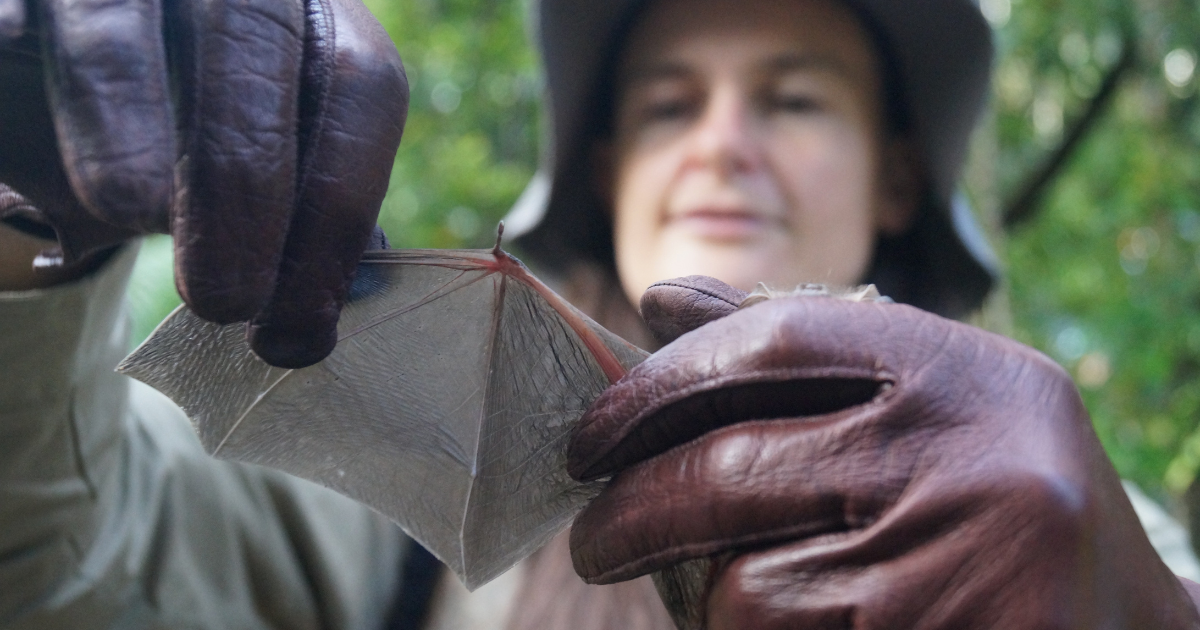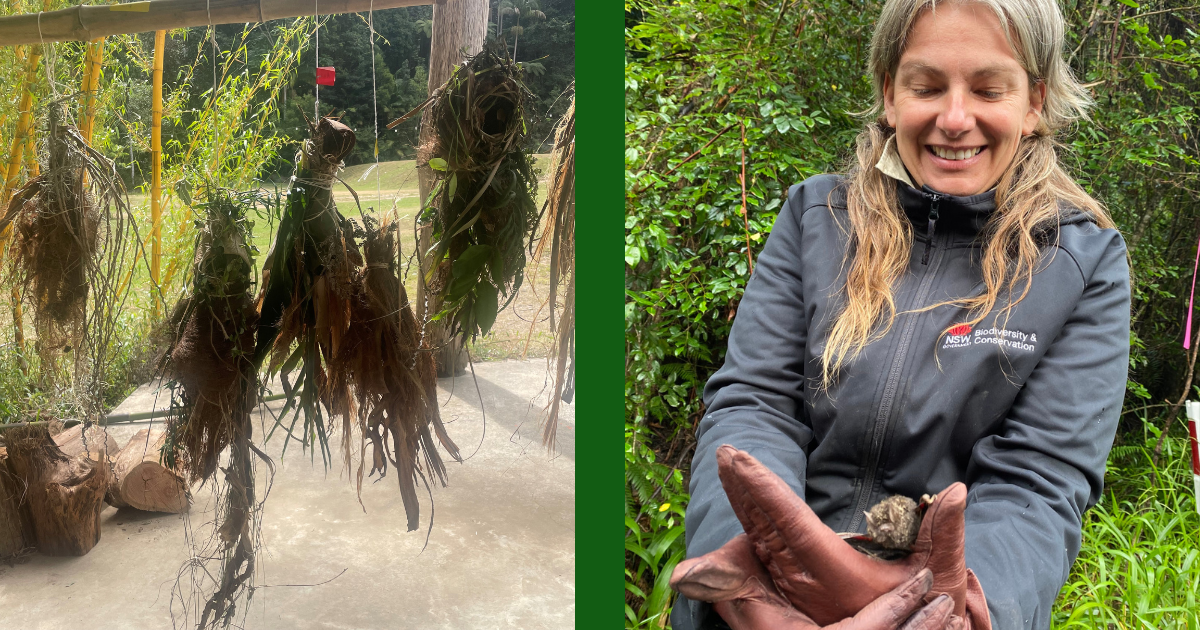
WIRES Assists Gumbaynggirr Country Weave Roosts For Threatened Bat Species
Tuesday, July 2, 2024
As part of NAIDOC Week, WIRES is proud to highlight a project that was supported through our National Grants Program.
With the support of the NSW Government’s Saving our Species program, and WIRES National Grants Program, the project assisted the threatened Golden-tipped Bats on NSW’s mid-north coast by crafting roosts using traditional Gumbaynggirr weaving techniques.
Two years after the first roosts were installed, locals are now starting to see this threatened bat species use these hand-crafted roosts, sparking hope and optimism that this species may begin to recover.
Titled “Girrimarring wiirrilgal bulany ngayanbading”, meaning “bat nest type fur sun like”, by Uncle Gary Williams from the Muurrbay Aboriginal Language and Culture Co-operative, this project demonstrates how collaboration between First Nations’ peoples and research programs can result in better outcomes for wildlife.
Issue Facing Golden-Tipped Bats Following The Bushfires
The devastating Black Summer bushfires of 2019-20 wreaked havoc on many of Australia's native species, including the tiny Golden-tipped Bat.
These six-gram bats typically roost in nests made by small native birds, but with their habitats decimated by the fires, they were left vulnerable to predators and unable to find suitable shelter.
The loss of these crucial roosting habitats posed a significant threat to the survival of this already threatened species, highlighting an urgent need for intervention to help them recover.

Roost Weaving Enriching Local Communities
The weaving was lead by the Muurrbay Aboriginal Language and Culture Co-operative and the Yarrawarra Aboriginal Cultural Centre, who engaged local volunteers and school students to take part.
WIRES funding was used to help facilitate 18 weaving sessions, as well as a end-of-project school camp out for the participants.
A total of 45 woven roosts were created from natural materials such as grasses, soft bark, lichen, and small twigs.
Constructing these roosts are not only important for the threatened Golden-tipped bat, but also for the local community.
The golden-tipped bat is a totem for some Gumbaynggirr men, while traditonal weaving is a practice that allows for Elders to connect with youth and share stories and knowledge.
“This was a wonderful project that brought community, both young and old together, to give back to the environment” said Alison Williams, creative director of the Yarrawarra Aboriginal Cultural Centre.
'We are moved and very excited that we were able to work towards saving the golden-tipped bat using cultural knowledge and natural resources”.
Thanks to the positive outcomes for local communities and Golden-tipped bats, this project will be rolled out into regions faced with similar issues.
WIRES’ role in supporting community initiatives
WIRES is proud to have been involved with “Girrimarring wiirrilgal bulany ngayanbading” and is excited to see more communities become involved going forward.
WIRES National Grants Program was launched in 2021, with the aim of supporting rescue groups, organisations and communities across Australia deliver long-term protection and preservation outcomes for native wildlife.
Our 2024 Grants open on July 15th and licensed wildlife rescuers and groups are encouraged to apply. Learn more about the key dates and eligibility information here
Recent Posts
WIRES launches its first wildlife rehabilitation centre - Mullyang
WIRES Emergency Response in the wake of ex-tropical cyclone Alfred
International Women’s Day Volunteer Spotlight: Shelley
Tropical Cyclone Alfred – Emergency Wildlife Advice
Interview with WIRES Training and Development
Celebrating Women in Science: The Journey of Holly, Wildlife Conservationist and WIRES Team Member
